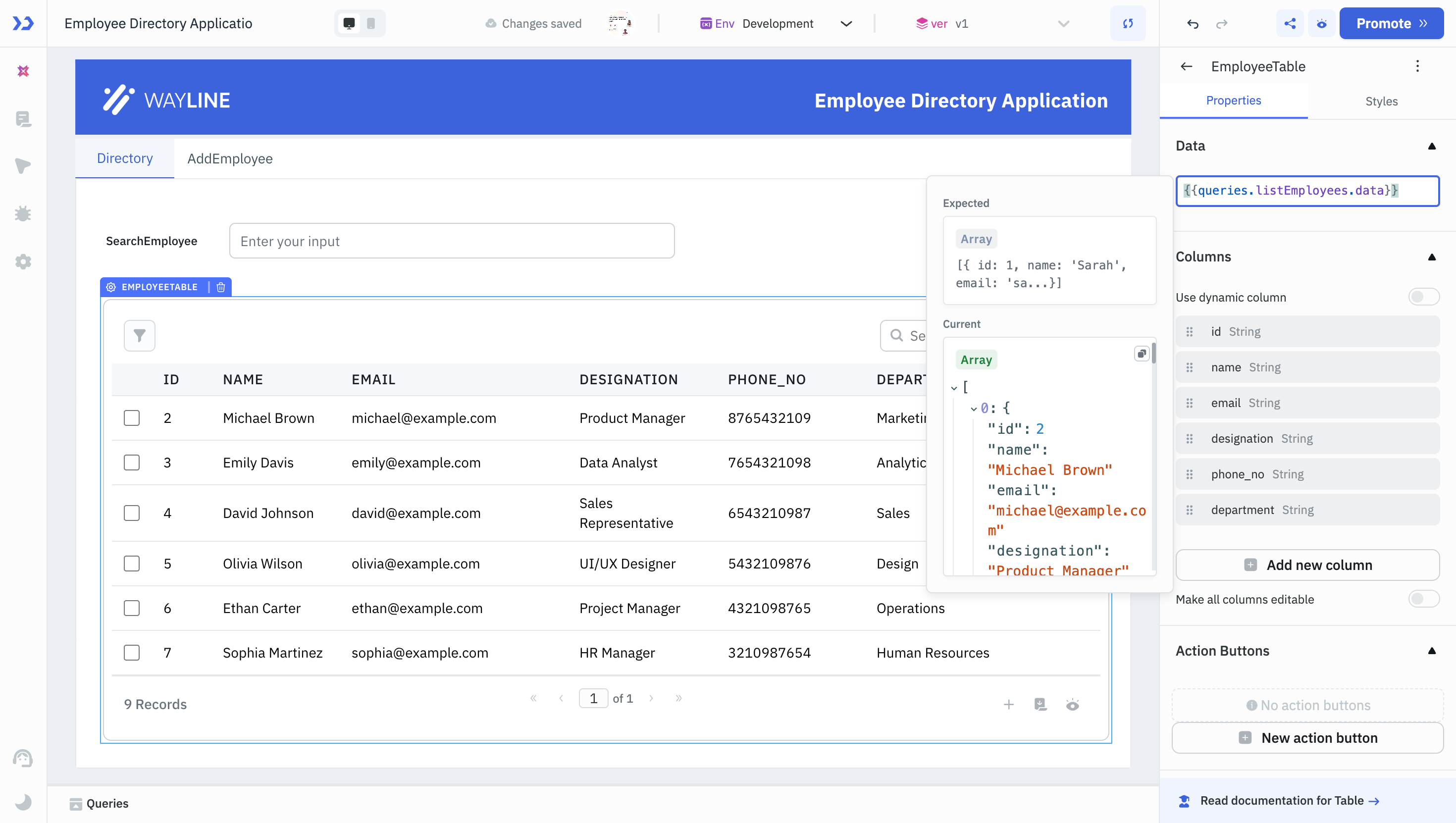Binding Data to Components
In this section, you’ll learn how to connect and bind data to components within ToolJet, whether the data comes from a data source or other components in your app.
You can display data from your data source queries in the components using the {{ }} syntax. For instance, you can pass data to a Table component's Data property using the following format: {{ queries.<query-name>.data }}
For example, you are working on an Employee Directory app where you want to show all employees in a table. If you have a query named listEmployees that returns an array of employee objects, you can pass its data to a Table component by setting the table's data property to {{queries.listEmployees.data}}.

ToolJet also supports JavaScript expressions inside {{ }}, allowing you to dynamically transform data before display. Here are a few use cases:
Use cases
Filtering Data
If you want to show only employees from the ‘Engineering’ department:
{{ queries.listEmployees.data
.filter(employee => employee.department === 'Engineering') }}
Map Data
If you want to show only employee names in a dropdown:
{{ queries.listEmployees.data
.map(employee => employee.name) }}
Conditional Rendering
If you want to show a greeting if an employee is selected in a table:
{{ components.table1.selectedRow ? `Hello, ${components.table1.selectedRow.name}` : "" }}
Chaining Expressions
You can also chain multiple JavaScript methods for more complex transformations. For example, filtering and then mapping:
{{ queries.listEmployees.data
.filter(emp => emp.department === 'Engineering')
.map(emp => emp.name.toUpperCase()) }}
These expressions give you control over how data is displayed and interacted with inside your ToolJet applications.